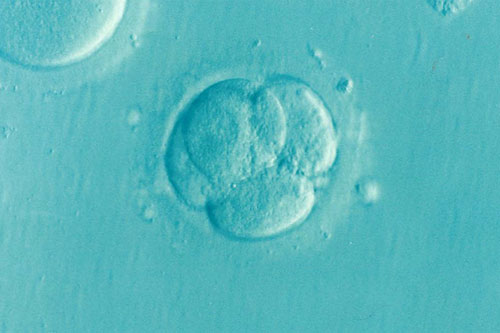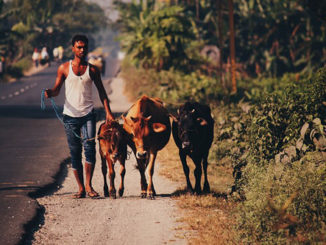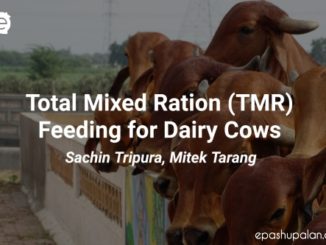Agriculture along with animal husbandry has been and will continue to be the lifeline of Indian economy. India is the largest and one of the most economical milk producers in the world. It is the most important sector of the Indian economy particularly in poverty alleviation and employment generation. In India, the dairy sector plays an important role in the country’s socio-economic development, and constitutes an important segment of the rural economy. Dairy industry provides livelihood to millions of homes in villages, ensuring supply of quality milk and milk products to people in both urban and rural areas. India is the world’s largest milk producer, accounting for around 17% of the global milk production. Besides, it is one of the largest producers as well as consumers of dairy products. To increase milk production and profit farmers are raising exotic breed cattle and crossing indigenous breeds with exotic cattle breeds. So the numbers of pure breed indigenous cattle are decreasing day by day. The milk is produced from indigenous cattle is A2, which is more beneficial to health as compare to A1 milk obtained from exotic cattle. Some Indian cattle breed ex. Gir, Red Sindhi, Sahiwal produce good amount of milk. So there is need to preserve and increase reproductivity of indigenous cattle by embryo transfer technique.
Why there is need of embryo transfer technique
Nature has given immense power of reproduction to the cattle. Every cow can produces about 150,000 fertile ova. Similarly millions of sperms are produced by bulls but through natural reproduction only small fraction of reproducibility can be achieved. On an average one cow give birth to only one calf in a year. By using artificial insemination technique semen of genetically superior bull is used to inseminate several no. of females, although this technique doesn’t enhance the reproductivity of cow. This technology can be used commercially for the production of breeding stock of dairy animals. In view of acute shortage of breeding bulls and elite animals, especially of Indian breeds, this technology has more relevance to our country. A private firm involved in bovine genetics and multiple cattle reproduction has achieved a whopping 56 pregnancies from the eggs of a single cow of the Gir breed. All the calves are expected to be born between January and June this year. “This is a significant development considering that normally, a single cow cannot give birth to more than eight to ten calves in its lifetime. Here, we have ensured 56 cows being pregnant with embryos developed by fertilizing eggs from a single cow in just six months,”
Steps of Embryo Transfer in Cattle
Selection of the Donor Cow
The potential donor cow should be reproductively sound to produce the desired result. The cow should have a normal reproductive tract and post partum history especially with regard to estrous lengths of 18 to 24 days both beef and dairy cows should be at least 60 days post partum before the transfer procedure begins. Donor cows should be selected on the basis of following criteria.
- Regular estrous cycles commencing at a young age
- A history of no more than two breeding per conception
- Previous calves with approximately 365day intervals
- No parturition difficulties or reproductive irregularities
- No conformational or detectable genetic defects
The cow should be maintained at nutrition level appropriate for her size and level of milk production. Both the very obese cow and the thin cow will have reduced fertility so it is very important that the donor be in an appropriate body score at the time of embryo transfer.
Super ovulation of Donor cow
Superovulation is the release of multiple eggs at single estrus. Cows or heifer properly treated can release as many as ten or more viable eggs at one estrus. Approximately 85% of all normal fertile donors will respond to super ovulation treatment with an average of five transferable embryos. Some cows that are repeatedly superovulate at 60 day interval may produce fewer numbers of egg over time. Generally, FSH preparations are injected twice daily for four days at the middle or near the end of a normal estrus cycle, while a functional corpus luteum is on the ovary prostaglandin injections given on the fourth day of the treatment schedule will cause CL regression and estrous to occur approximately 4 hours later.
Insemination of cow
multiple no. of ova released from super ovulation so there is need of high quality semen, with a high percent of viable sperm cells to reach the oviduct of selected females. So the superovulated female are inseminated at 12, 24, 36 hours after the onset of standing estrous. The correct site for semen placement is in the body of the uterus.
Flushing of Embryos
To collect the embryos non surgically, a small synthetic rubber catheter is inserted through the cervix of the donor cow, a special medium is flushed into and out of the uterus to collect the embryos seven day after estrus.
Evaluation of the Embryos
The major criteria for evaluation include:
- Regularity of shape of the embryo
- Compactness of the blastomeres (the dividing cells within the boundaries of the embryo)
- Variation in cell size
- Color and texture of the cytoplasm (the fluid within the cell wall)
- Overall diameter of the embryo
- Presence of extruded cells
- Regularity of the zona pellucida (the protective layer of protein and polysaccharides around the single celled embryo)
- Presence of vesicles (small bubble like structure in the cytoplasm)

According to these criteria embryos are classified as:
- Grade 1: Excellent or good
- Grade 2: Fair
- Grade 3: Poor
- Grade 4: Dead or degenerating.
Embryo quality is also very important in the freezing and thawing stress. Grade 1 embryos generally are considered the only one to freeze. Grade 2 embryos can be frozen and thawed but pregnancy rate is reduced.
Selection and Preparation of Recipient Females
Cows that are reproductively sound having good milking and mothering ability are recipient. they must be properly nourished, and should have sound herd health program. To maximize embryo survival estrous synchronization between donor and recipient is required. The critical point is that the estrous synchronization timing must match the time of insemination of the donor cow so that both have similar uterine environment 7 day later when transfer take place.
Transfer of the Embryos
The Embryo is loaded into the ¼-mL insemination straw under microscopic view. The transfer gun or insemination rod is carefully passed through the cervix. The tip of the rod is then allowed to slide into the horn having ovaries with active corpus luteum. The embryo gently expelled in the forward tip of that uterine horn. Embryo flushing and transfer both should be done after giving epidural anesthesia to block the contractions of digestive tract. Embryos should be transferred as soon as possible after the flush (within 8 hours at least).







Be the first to comment